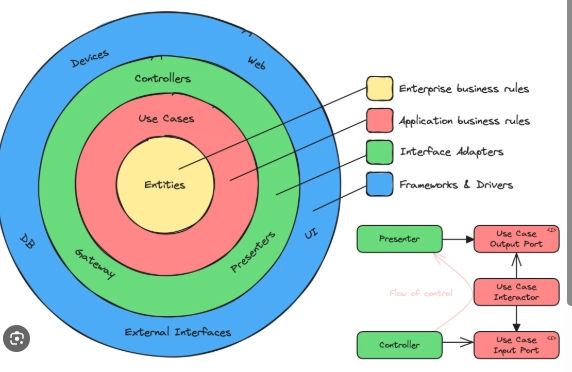A Case for Semicolon-less JavaScript (ASI)
Why semi-columns Before making a case for semicolon-less JavaScript, you must first understand why the majority of experienced developers will continue to reject automatic semicolon insertion (ASI). Why these seemingly experienced developers clutter their code and keystrokes. In short semi-columns in JavaScript helps reduce the surface for bugs in poorly maintained code bases, and provides clearer intent to formatters such as prettier. The case for semicolon-less JavaScript I spent a long time searching for reasons for and against JavaScript semi-columns. But almost all of the reasons against semi-columns were "linting should catch semicolon-less errors" and "I can type at 100 words per minute, so if I omit a semi column, I can save 0.6 seconds per line", or the worst "it looks better". However, I have recently come across a stronger argument for semicolon-less JavaScript and ASI. DIFFS AND BLAMES I believe that one of the quickest ways to determine the quality of a code base is to look at the Git / version control history. A good commit history is descriptive, has clear ownership, and has a well maintained blame. A well maintained blame and version history is often overlooked by the majority of developers, but correct version control is more descriptive than any number of code comments. Each commit is a snapshot that describes who made a change, why they made the change, and what problem they were trying to fix. Additionally, a good diff is important for code reviewers who will commonly review using a diff or patch view. However, semi-columns do not play nicely with the builder pattern or functional programming paradigms. While you may not like either the builder pattern of functional programming, your project will inevitably use code someone else has written. And that person may not agree with your reservations against the builder pattern. For a simple demonstration, I have created a simple class that has two methods, add() and sub(). class MyBasicMath { #total = 0; add(value) { this.#total += value; } sub(value) { this.#total -= value; } } const myValue = new MyBasicMath() .add(5) .sub(1); In my contrived universe, I have recently found a bug in my code, myValue is currently wrong because I forgot to add three. So a simple fix will be to append another .add(3) to the end of this function chain. I have provided two diff's below, the first one is an example adding a add(3) call to a code base that uses semi-columns, while the second example is semicolon-less. In the project that uses semi-columns you'll see that if I append a sub() method call, the line above is also included in the diff because the semi-column was removed. Diff with semi columns const myValue = new MyBasicMath() .add(5) - .sub(1); + .sub(1) + .add(3); Diff without semi columns const myValue = new MyBasicMath() .add(5) .sub(1) + .add(3) As you can see above, I am being blamed for the sub function. When the real change that I made was adding add(-3). A more common/relatable example would be functional programming paradigms such as the map, `filter, etc... Array instance methods. ts const myData = [-2,-1,0,1,2]; const result = myData.map((value) => value * 2) .filter(() => value > 0); If I was to add an additional map function to the end of this method chain, the usefulness of the Git blame would immediately be destroyed because I would be blamed for changing the filter line when the semi-column was removed. `diff const myData = [-2,-1,0,1,2]; const result = myData.map((value) => value * 2) .filter(() => value > 0); .filter(() => value > 0) .map((value) => value + 1); `

Why semi-columns
Before making a case for semicolon-less JavaScript, you must first understand why the majority of experienced developers will continue to reject automatic semicolon insertion (ASI). Why these seemingly experienced developers clutter their code and keystrokes.
In short semi-columns in JavaScript helps reduce the surface for bugs in poorly maintained code bases, and provides clearer intent to formatters such as prettier.
The case for semicolon-less JavaScript
I spent a long time searching for reasons for and against JavaScript semi-columns. But almost all of the reasons against semi-columns were "linting should catch semicolon-less errors" and "I can type at 100 words per minute, so if I omit a semi column, I can save 0.6 seconds per line", or the worst "it looks better".
However, I have recently come across a stronger argument for semicolon-less JavaScript and ASI.
DIFFS AND BLAMES
I believe that one of the quickest ways to determine the quality of a code base is to look at the Git / version control history.
A good commit history is descriptive, has clear ownership, and has a well maintained blame. A well maintained blame and version history is often overlooked by the majority of developers, but correct version control is more descriptive than any number of code comments. Each commit is a snapshot that describes who made a change, why they made the change, and what problem they were trying to fix.
Additionally, a good diff is important for code reviewers who will commonly review using a diff or patch view.
However, semi-columns do not play nicely with the builder pattern or functional programming paradigms.
While you may not like either the builder pattern of functional programming, your project will inevitably use code someone else has written. And that person may not agree with your reservations against the builder pattern.
For a simple demonstration, I have created a simple class that has two methods, add() and sub().
class MyBasicMath {
#total = 0;
add(value) {
this.#total += value;
}
sub(value) {
this.#total -= value;
}
}
const myValue = new MyBasicMath()
.add(5)
.sub(1);
In my contrived universe, I have recently found a bug in my code, myValue is currently wrong because I forgot to add three. So a simple fix will be to append another .add(3) to the end of this function chain.
I have provided two diff's below, the first one is an example adding a add(3) call to a code base that uses semi-columns, while the second example is semicolon-less.
In the project that uses semi-columns you'll see that if I append a sub() method call, the line above is also included in the diff because the semi-column was removed.
Diff with semi columns
const myValue = new MyBasicMath()
.add(5)
- .sub(1);
+ .sub(1)
+ .add(3);
Diff without semi columns
const myValue = new MyBasicMath()
.add(5)
.sub(1)
+ .add(3)
As you can see above, I am being blamed for the sub function. When the real change that I made was adding add(-3).
A more common/relatable example would be functional programming paradigms such as the map, `filter, etc... Array instance methods.
ts
const myData = [-2,-1,0,1,2];
const result =
myData.map((value) => value * 2)
.filter(() => value > 0);
If I was to add an additional map function to the end of this method chain, the usefulness of the Git blame would immediately be destroyed because I would be blamed for changing the filter line when the semi-column was removed.
`diff
const myData = [-2,-1,0,1,2];
const result =
myData.map((value) => value * 2)
- .filter(() => value > 0);
- .filter(() => value > 0)
- .map((value) => value + 1);
`




























































_.png)
















































































































![[The AI Show Episode 151]: Anthropic CEO: AI Will Destroy 50% of Entry-Level Jobs, Veo 3’s Scary Lifelike Videos, Meta Aims to Fully Automate Ads & Perplexity’s Burning Cash](https://www.marketingaiinstitute.com/hubfs/ep%20151%20cover.png)
























































































































![[DEALS] FileJump 2TB Cloud Storage: Lifetime Subscription (85% off) & Other Deals Up To 98% Off – Offers End Soon!](https://www.javacodegeeks.com/wp-content/uploads/2012/12/jcg-logo.jpg)



![From electrical engineering student to CTO with Hitesh Choudhary [Podcast #175]](https://cdn.hashnode.com/res/hashnode/image/upload/v1749158756824/3996a2ad-53e5-4a8f-ab97-2c77a6f66ba3.png?#)










































































































































_sleepyfellow_Alamy.jpg?width=1280&auto=webp&quality=80&disable=upscale#)

















































































































![watchOS 26 May Bring Third-Party Widgets to Control Center [Report]](https://www.iclarified.com/images/news/97520/97520/97520-640.jpg)

![AirPods Pro 2 On Sale for $169 — Save $80! [Deal]](https://www.iclarified.com/images/news/97526/97526/97526-640.jpg)
![Apple Shares Official Trailer for 'The Wild Ones' [Video]](https://www.iclarified.com/images/news/97515/97515/97515-640.jpg)




































































